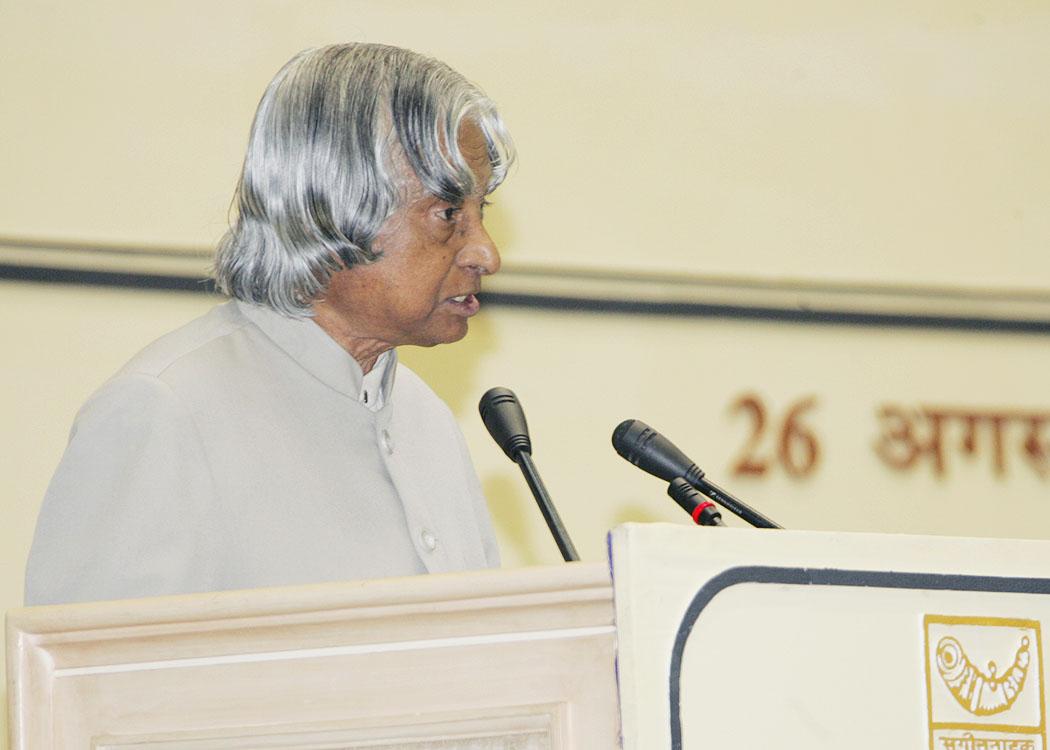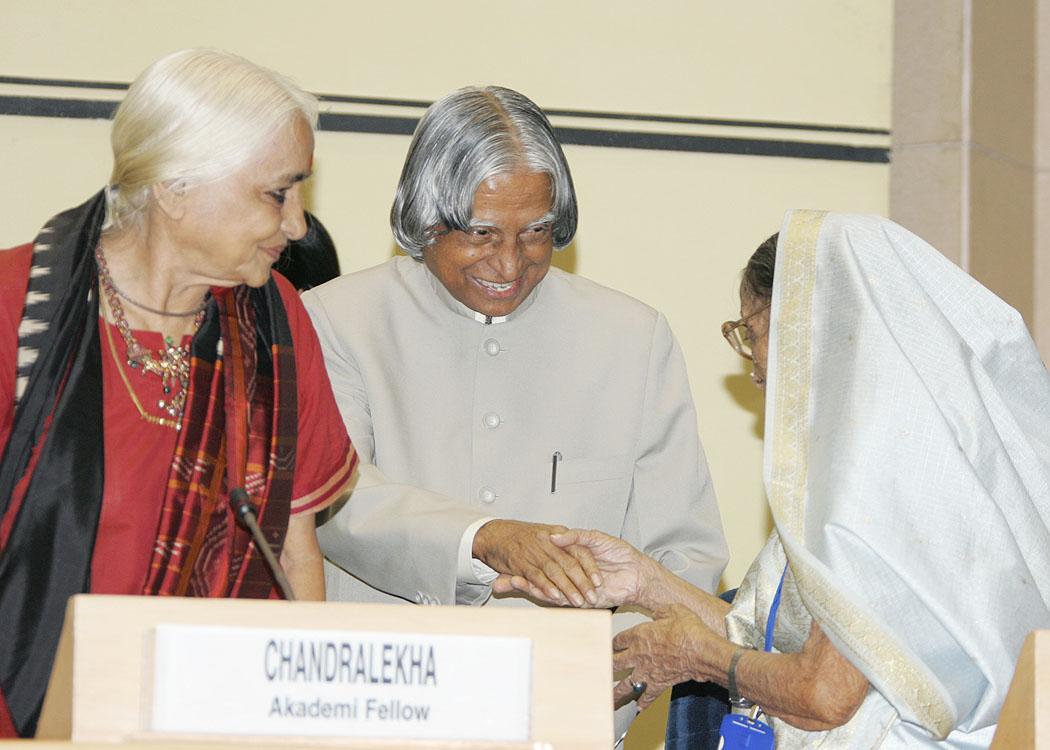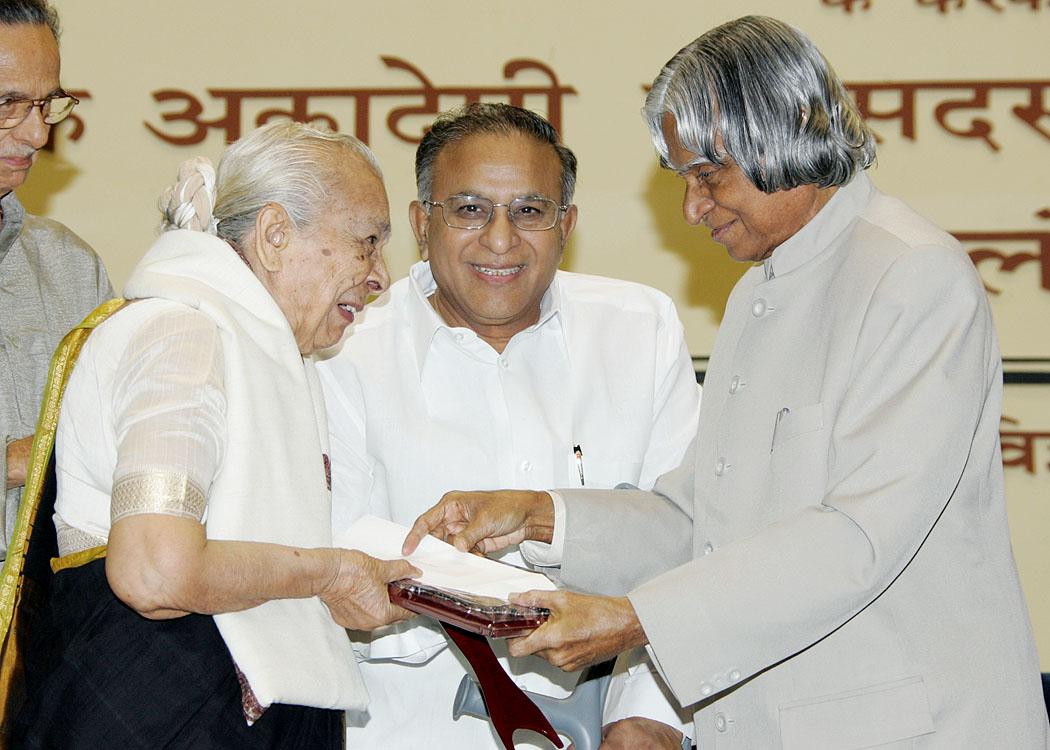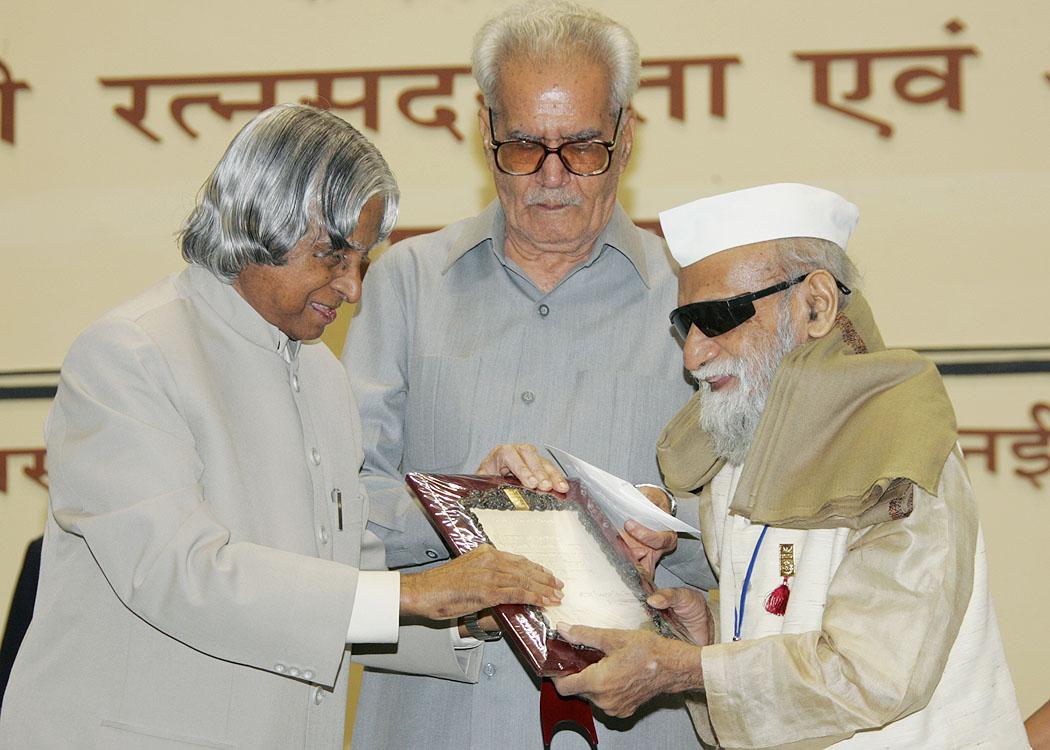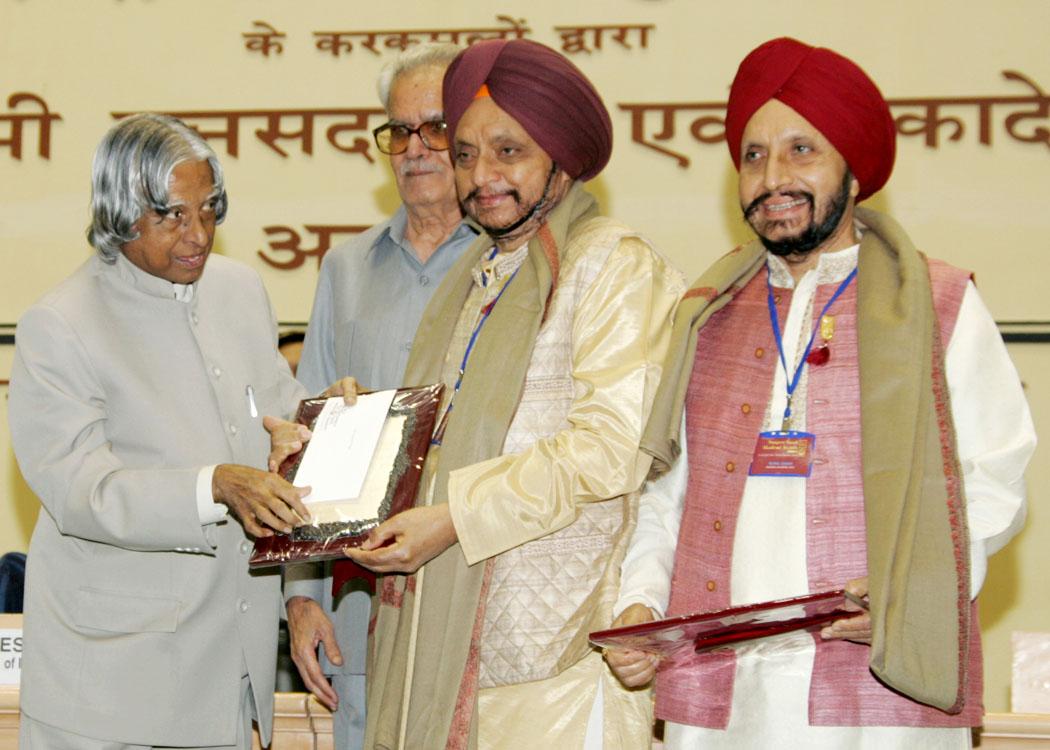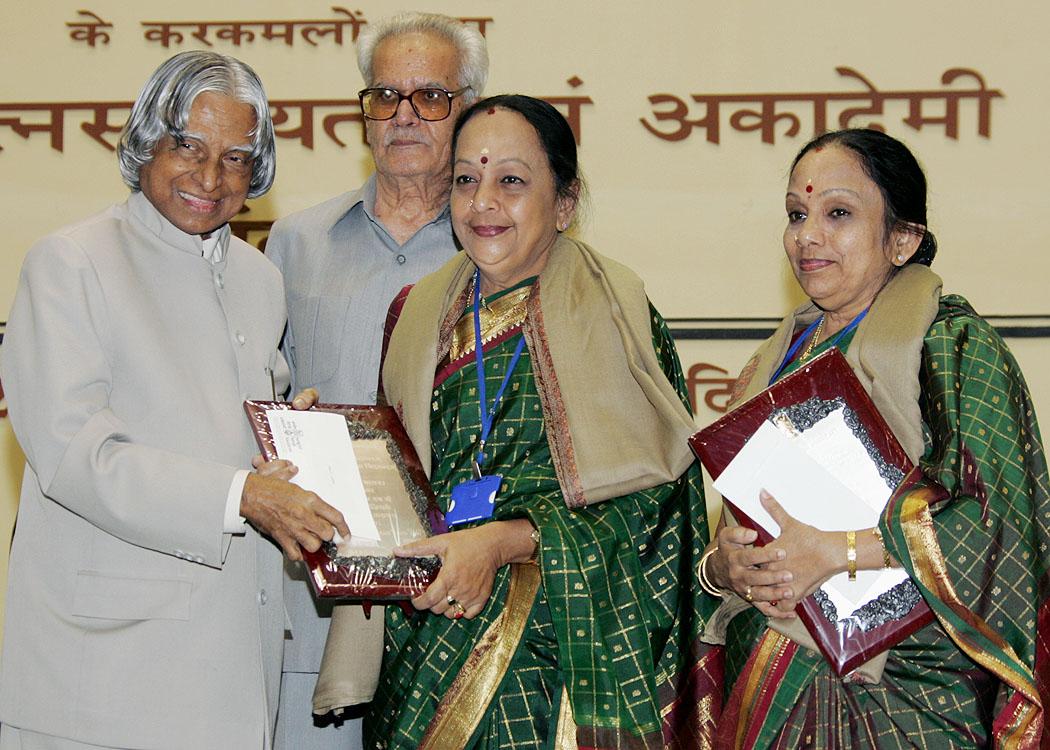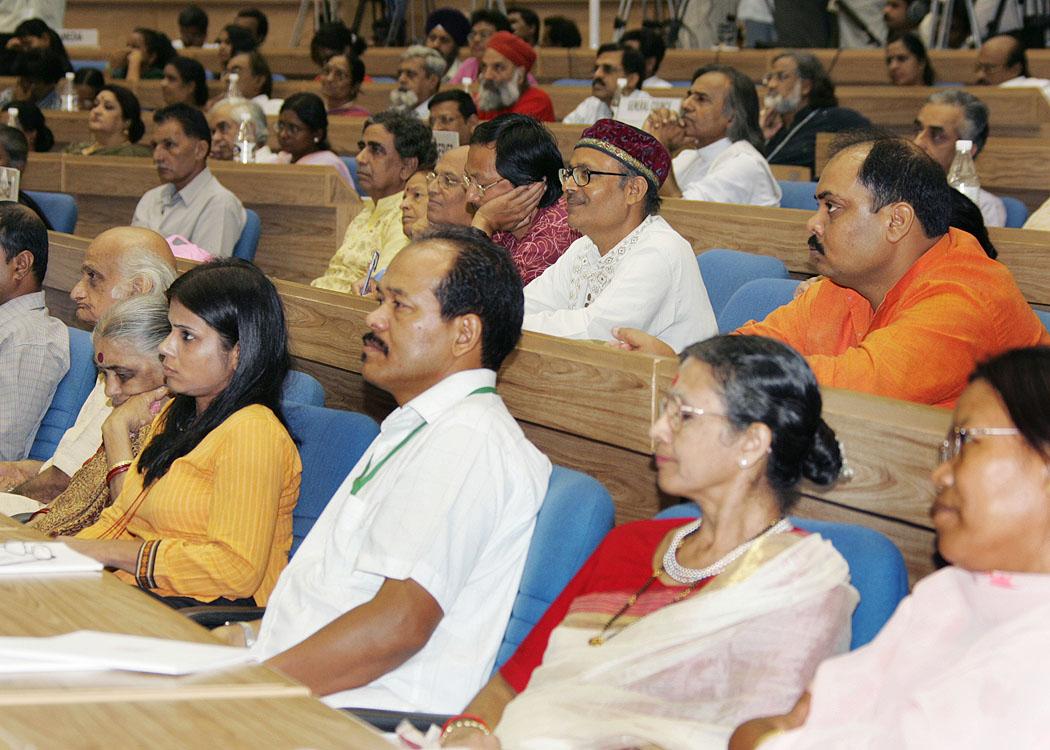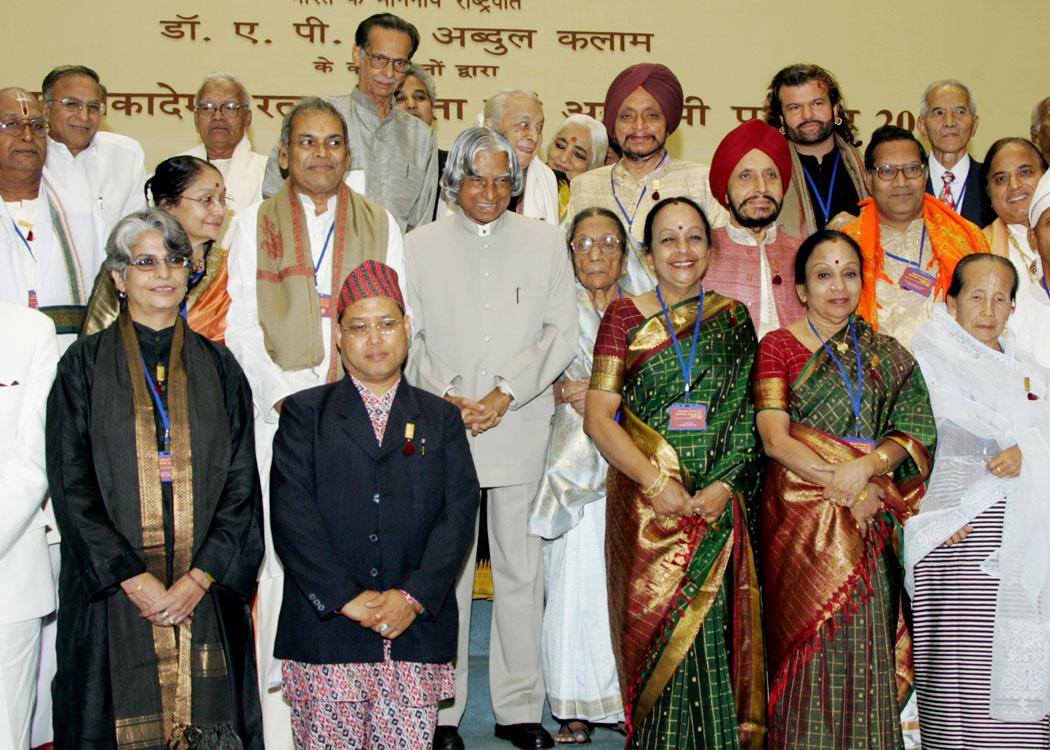Address During The Conferment Of Sangeet Natak Akademi Awards 2005
Vigyan Bhawan, New Delhi : 26-08-2005
Music is a divine manifestation
I am delighted to participate in the conferment of the Sangeet Natak Akademi Awards for the year 2005. I greet the organizers, musicians, dancers, theatre artists, folk artists, art lovers and distinguished participants. The Sangeet Natak Akademi, which is now 53 years of age, has honoured many practitioners, Gurus and scholars in the performing arts, who represent the nation?s highest achievement in Music, Dance and Drama. When I think of classical music I find that every Raga has a special purpose and meaning. I extend my congratulations to all the recipients of the Sangeet Natak Akademi Ratna and Sangeet Natak Akademi Puraskar for the year 2004. Today, I would like to talk on the topic "Music is a divine manifestation". Let me share with you a musical experience.
Confluence of Music
I recently attended a function to celebrate the 100 years of Bangalore Gayana Samaja. On this occasion, they recognized three artists: Hindustani Vocalist Dr. Gangubai Hangal (93 years), Carnatic vocalist Dr. R.K. Srikantan and Mirudangam Vidwan Shri Vellore Ramabadran with the centenary award. As a part of the celebrations, there was a programme by the Violin Maestro Dr. L. Subramaniam. He was accompanied by another young Violinist, Mridangam, Ghatam, Kanjira and Morsing Vidwans.
The artists before starting the music offered their prayers to the Almighty and paid their respects to the audience. The recital began with the kriti 'Vathapi Ganapatim Bhaje' composed by Muthusamy Dikshitar on Hamsadwani Raga and Adi Tala. L. Subramaniam played the violin solo; then together with young violinist in combination. Then the violin artist shared in sequence with each artist Violin, Mridangam, Morsing and Kanjira in the background of Swaram. The way the Maestro recognized the best of performance of every artists was indeed a beautiful scene. Every artist was bringing out the best of the music and it was well recognized by the audience. The peak was yet to come. In the final phase, all the artists together with the violin in the mid stream performed in unison and the whole audience merged with the musical rhythm.
The scene was indeed like a confluence of a multiple river streams flowing rhythmically into the ocean of divine music. The twenty minutes of the integrated musical performance of the artists took the audience to the plane of bliss. There was a standing ovation from the audience for the musical performance that came out of the integration of hearts and minds of the artists. The period of rhythmic divine music is indeed an elevating experience to all of us. Music transcends on thousands of minds bringing peace and happiness. When I see you all friends, belonging to that tradition, I salute you all.
Searching the talents and promotion
The country has multiple organisations such as Indian Council of Cultural Relations, Sangeet Natak Akademi, and similar institutions in the State sectors and the private initiatives such as Kala Kshetra, Music Akademi, several drama and music troupes for promoting music, dance and drama. It is essential to bring the best from all parts of the country. The Sangeet Natak Academy can have the specialist team for various regions for searching the talent in the music, dance and drama, encourage the best and bring them to participate in the festivals. The aim should be to reach a larger number of people particularly the youth so that our ancient culture is preserved, nurtured and passed on to the next generation, in all its richness.
Music integrates
Divine compositions, Purandaradasa and Sadasiva Brahmendra continue to uplift the minds of millions even this day. When we hear Balamurali Krishna sing 'Cetaha Sriramam' or the Dhun of Ustad Bismillah Khan in (Shehnai) or when we hear Pandit Shiv Kumar Sharma's Rag Yaman on Santoor, it is difficult to express the joy and elevated thoughts in words. It can only be experienced and felt. Similarly, when we hear Kishori Amoankar sing "nainanu neenuu bahe" or a ballad of Bhojpuri; or Papanasam Sivan?s Amba manam kanindhu, even if we do not follow the exact words, rhythm captivates us.
Drama and Theatre
Drama has been a great form of entertainment for invigorating the minds of people. It can be a powerful medium for messages and planting excellent imaginative thoughts for young and old. When I was in school, I have seen many dramas being enacted in the schools and even outside. This form of art has been under great pressure due to cinema, TV and multimedia, which have their own role. But we need to recapture many of our ancient drama forms, and rich traditional stories embedded in them. I would like to explain my personal experience in native theater of arts. During the period 1985 to 1995, quite often I used to travel by road from Bhubaneshwar to Chandipur in Balasore District of Orissa. It is a five hours drive from Bhubaneshwar air port. In this journey I will be passing through a number of villages covering at least five districts of Orissa, during the nights. During the Navratri period it used to be a beautiful scene of dance, music and drama played by village artists in front of different images of the Goddess Durga throughout this route. This used to be a great musical and happy meeting of the citizens of that area and it also generated a large number of local talents. This should be encouraged and appreciated by institutions such as Sangeet Natak Akademi.
Encouraging Young Artists
I have briefly discussed earlier about the spreading of the classical dance, music and drama to the masses. There is another crucial problem needing urgent solution. There are many young artists from all over the country especially from smaller towns and villages. For them to pursue artistic profession even on part time basis is a difficult job. There are many entry barriers. Sangeet Natak Akademi would need to address it urgently. Otherwise, best of the young persons who do not have patrons to promote them, may not get into artistic profession at all. If talented youth from different walks of life are facilitated to enter into art, the richness and diversity of the Indian art forms will get the much needed nourishment.
Rashtrapati Bhavan Experience
To pay tribute to the India?s Cultural heritage and to celebrate performing art a series of cultural programmes organised under the auspices of "Indradhanush". The aim of "Indradhanush" is to acknowledge the contribution of the renowned as well as the young artists. So far, we have organized eighteen such programmes. It started with the performance of Pandit Jasraj. He sang among other bhakti geets, Govind Damodar and Mero Allah Meherbaan. Also, Flute Maestro Pandit Hari Prasad Chaurasia, Rudra Veena by Asad Ali Khan, Saraswathi Veena by E. Gayathri and Odissi dance performance by Sonal Mansingh gave excellent performance. Recently, a Ghazal performance by Shri Jagjit Singh was conducted. I would like to share with you my experience with two Nadaswaram Vidwans ? Sheikh Mahboob Subhani and Smt. Subhani. They gave a beautiful Nadaswaram recital performance to the Rashtrapati Bhavan audience. After the recital I requested the couple to perform for the differently abled children, whenever they get an opportunity. They made it a point to perform for some of our special children in Chennai and I understand that it gave lot of happiness to these special children. This is a very noble cause and I would request the artists assembled here to follow this example whenever they get an opportunity to make the special children happy.
In addition, we have also organized several cultural programmes of young artists were, Master Abhay Goyal, an eight year old boy played Piano. Master Siddharth Nagarajan a seven year old boy played the drums, sixteen year old L. Athira performed violin and children of Sridevi Nrithyalaya, Chennai performed Bal Ramayan dance drama. Let us encourage our children and youth to participate in arts and culture and demonstrate their abilities which will motivate the other children to perform better in their field of expertise, and enable the nation to preserve our cultural heritage and bring about societal harmony.
Conclusion: Music, Dance, Drama for Unity of minds
I had the opportunity to witness the great exponents of music, dance and drama. The experience of listening and seeing them makes me think that whether music and dance can be used as an instrument for ensuring global peace and act as a binding force. Fortunately, we have a rich civilizational heritage of more than 5000 years blending literature, music, dance and drama.
The music and dance takes you to a different plane and gives you a breeze of happiness and peace. I believe such music and dance will emanate only when the artists themselves are in peace and in a happy state of mind. In this state they will become an elegant example of propagators of peace and happiness to the society.
Normally the peak performance of an Indian classical music needs minimum one hour. It is essential to attract the youth to this kind of musical performance through the TV advertisement clips by showing the peak musical performance as a special 'minute bulletins' to catch the imagination of the youth.
When we give these awards, I realize that we are admiring and recognizing the performance of experienced artists. In addition to this, we have to admire and nurture upcoming artists, in different parts of the country including the remote areas. At least 10 awards may be instituted for celebrating the young artists below 20 years. I suggest a special team should be deputed for spotting the artists by visiting the rural areas.
I once again congratulate the recipients of Sangeet Natak Akademi awards. My best wishes to all the members of Sangeet Natak Akademi in their mission of preserving, nurturing and promoting our traditional performing art form among the youth of the nation.
May God bless you.

